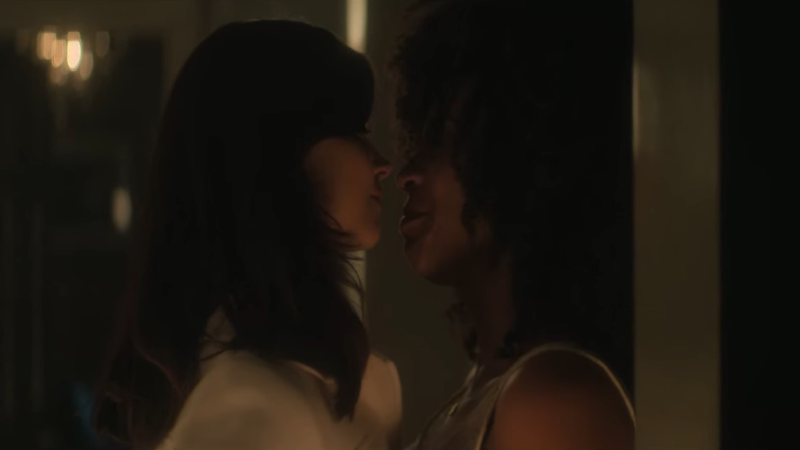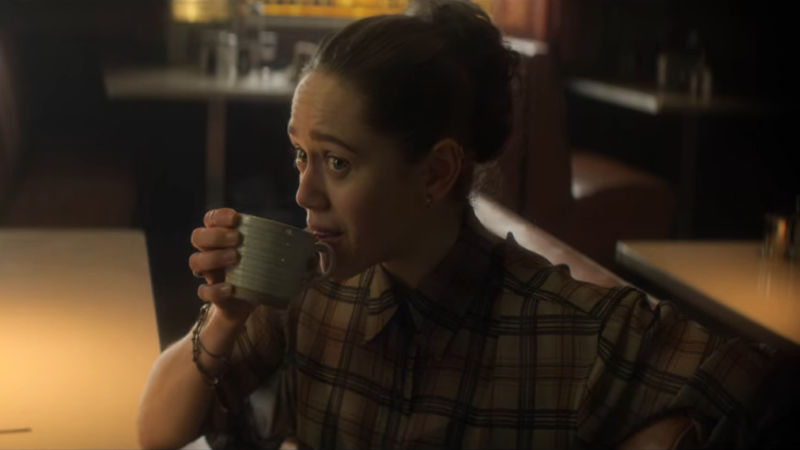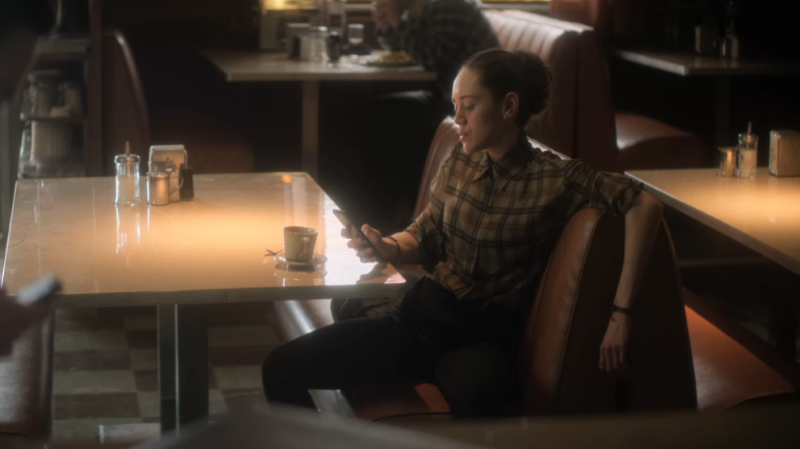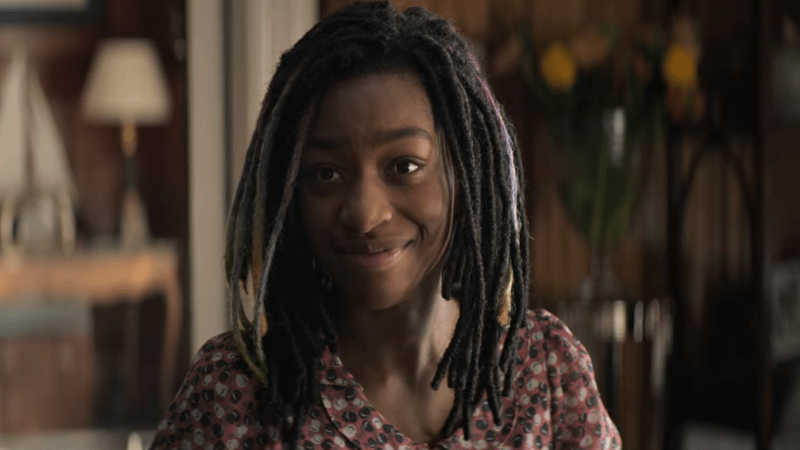The Sandman crafts a fantastical world where dreams are as real as the ground under your feet, where feelings are gods and rubies can make wishes come true, where nightmares walk among us and where everyone, it seems, is at least a little bit queer.
The show is about Morpheus, the king of dreams, and his quest to keep the balance between the Dreaming and the waking world. The Dreaming is an expanse of magical things, full of dreams and nightmares, answering the age-old question, “when we all fall asleep, where do we go?”
I went into The Sandman with no context, not having read the Neil Gaiman comic of the same name, but I don’t think that hurt my experience at all. I maybe would have guessed it was based on a comic if I didn’t know, because of how stylized the art was, and because of characters like Mervyn Pumpkinhead, but the worldbuilding was thorough (and stunning) enough that I didn’t need further context. Also, having been raised Catholic and having consumed such media as Lucifer and various DCTV shows, a lot of the names and lore were familiar to me. They might pronounce “Constantine” differently than anyone on the CW ever did, but as soon as there was a little girl named Astra and a man with the last name Logue, I knew exactly what we were dealing with.
The Constantine we get in this show is not John, but Johanna, one of a long line of occult detectives and demon bounty hunters. She’s played by Doctor Who‘s Jenna Coleman, and just like Clara Oswald (and John Constantines) before her, Johanna Constantine is bisexual, and has an ex-girlfriend named Rachel who she finds herself having to go visit with Dream. Johanna is badass and stunning and I love her. I just wish we got more of her.

Would absolutely watch an entire Netflix series about Jenna Coleman’s Constantine.
There are other queer characters scattered throughout, including Judy, played by Daisy Head, whose story we learn in Episode 5.

I always forget she’s Giles’ daughter. I miss Harlots. Those are two separate but related thoughts.
What’s strange about this show is the way time works; some stories begin and end over the course of one episode, some stretch on for more than one. These queer characters and relationships are flickers, one minute there, the next minute gone, disappearing like a dream upon waking. Some dreams fade away, some become nightmares, all stayed with me long after they were gone.

I’m sorry for double Judy, I just had to include a full view of this outfit and also the way she’s sitting because it’s all just so gay and perfect.
Also, they never really addressed Rose Walker’s sexuality, but she was close friends with Judy, a few of her dreadlocks are rainbows, and the actress who plays her, Vanesu Samunyai aka Kyo Ra, is queer. So I feel okay with claiming her as queer. And Rose Walker is a main character, and a sweet, compassionate, powerful woman whose main goal in life is to a) find and save her little brother and b) not be told who she is by anyone, not even the god of dreams.

I would kill or die for Rose Walker, even though she’d never ask me to.
On top of having a wide spectrum of queerness in characters who also span a wide spectrum of morality, they also treat gender as if it’s as malleable as a lucid dream (as they should), especially when it comes to non-mortal characters, which makes sense to me; why would gods and other such beings adhere to our socially constructed gender binary? There are genderqueer characters like Desire played by Mason Alexander Park, who Dream calls “sibling” as a title the same we he addresses his other siblings as “brother” or “sister.” There are genderless characters like Lucifer, played by Gwendoline Christie, who no one uses any pronouns for whatsoever, referring to Lucifer exclusively by name or honorific. And they also have a number of characters they genderswapped from the comics like Lucienne, the head librarian of the Dreaming, played by Vivienne Acheampong.
A lot of the characters I’ve mentioned so far that are played by Black actors also were race-swapped from the comics, including one of my favorite characters of the series despite only being in one episode: Death, played by Kirby Howell-Baptiste.

I can only dream a being who looks like this appears to me when it’s my time to join the afterlife.
Of course, it isn’t a perfect show. There were a few things that had me raise an eyebrow, like the fact that one of the only named fat characters, and the only fat Endless we meet, is Despair. A lot of queer characters die, though I’d argue at least as many straight ones do, too. Though it has its moments of humor, it’s overall a pretty dark show; it’s about what happens when humanity is robbed of dreaming for a century. It’s gritty and gory at times, and I didn’t feel like any characters were being targeted because of their queerness. There just happened to be a lot of queer characters in this show where danger is around every corner.
Overall, I thought this show was a great time. It was magical and surreal and nothing was ever quite what it seemed. I wanted to go to the Dreaming, specifically its library, and dream-hop into my friends’ dreams. On one hand it’s a fantasy adventure story, on the other it’s a philosophical pondering on the concept of dreams, lies, hope and destiny.
I could list all the queer moments for you, but to me the queer moments aren’t just kisses and drag performances. For me queer moments are calling your best friend because you had a fight with your girlfriend, ghosting someone because the feelings got too real, feeling like your broken because of who you are, building a family when the one you were born into fails you, coming into your own power and learning that you are is actually who you are meant to be and owning that power. And that’s what I found in this show; it’s not a show that has one ship whose story has a beginning, middle and end. It’s not happy endings for all queer characters. Instead it’s a series of dreams and nightmares, vignettes with queerness quilted throughout.
Based on the way the season ended, I hope there is another to come. Maybe I’m lying to myself, thinking Netflix will renew a queer, diverse show. But, as Dream would tell us, to rob someone of lies it to rob them of their dreams. So maybe on this one, just let me dream.



From what I understand, there is going to be another episode for this season. The speculation is that it was separated because it will be a special (sort of like a holiday special).
I haven’t read the graphic novels since high school (aka a million years ago), but I highly recommend checking them out! They are absolutely beautiful.
This was a really lovely review!!
there’s a few distracting typos here like calling morpheus “the kind of dreams,” but thanks for writing this review. REALLY in the mood for colorful fantasy like this
Also Mason Alexander Park plays Desire, not Destiny.
It’s usualy safe to assume that Netflix will not renew a queer, diverse show but it’s Sandman. Neil Gaiman will have his second and third season with or without Netflix. He’s already hinted the possibility of a Johanna Constantine spin-off.
My only problem with this season was that my favourite Endless Delirium was not in it. And my second favourite Endless Death was only in it for one episode (Kirby Howell-Baptiste was absolutely delightful as Death)
These episodes followed the comics pretty closely, depicting Preludes and Nocturnes and The Doll’s House. I was hoping to see more of my favorite characters and storylines too, but I’d rather they produce a quality show that does the material justice than try and smoosh everything into one season or movie. Let’s hope it doesn’t get cancelled!
Mason Alexander Park played Desire not Destiny.
Lovely review for a great series. I read the comics ages ago so my memory was hazy going in but I was pleasantly surprised with how things clicked back into place. Even though a lot of the series was brutal, I really loved the casual queerness of it all, because it makes it feel like the brutality isn’t pointed towards us, it’s just the world being unkind. I also like that it wasn’t just the more villainous characters. If queer characters had been more restricted to those like the Corinthian it could’ve fallen into some regretful tropes.
Also, Ms. Death, are you free this Friday? Kirby Howell-Baptiste absolutely took my breath away with her performance, it was phenomenal. Episode 6 had me sobbing.
Late to the party but just watched this! Super enjoyed it for all the reasons you laid out, but was similarly really disappointed by their portrayal of Despair. I’m not sure if that stems from the comic (also haven’t read it) but was still surprised to see their design choice amidst the other casting choices. Hopefully Despair’s character (and portrayal) evolves in future seasons. Thanks for doing this review!